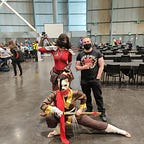The History of MMA: Origins in Japanese Pro Wrestling
The first word to come to the minds of most MMA fans when asked about pro wrestling (or sports entertainer per VKM and the WWE)is the dreaded “F word.” The word that once prompted Dave Schultz, Meng and Hulk Hogan to assault their would be interviewers has become synonymous with the sport, a worked event with scripted outcomes. This turn came about when the travelling carnival wrestlers realised that to keep people entertained, keep working more regularly without injury, and most importantly to keep people paying the focus switched to larger than life showmanship and “working” instead of “shooting.”
It is often overlooked how it had it’s roots in legitimate sporting contests, called catch wrestling, from as early as 1870 in England. Known also as hooking, this was a submission heavy style adopted mainly in England, most notably at the Snake Pit in Wigan run by Bill Riley. His most famous student? A talented German amateur wrestler by the name of Karl Istaz, later to compete as Karl Gotch. A relatively famous wrestler in America and Europe, his biggest successes came in Japan where he competed in the first New Japan Pro Wrestling Main Event on March 6, 1972, defeating Antonio Inoki (himself of almost cult like status in Japan). These accomplishments earned Gotch the title “God of Wrestling”, and his legacy to the country was training many of their best pro wrestlers in his own shoot style, legitimate holds.
These wrestlers included the likes of the aforementioned Antonio Inoki, Satoru Sayama, and Yoshiaki Fujiwara. Most of these professional wrestlers already had backgrounds in legitimate martial arts. This would eventually lead to the added influences of karate, Muay Thai and judo to the wrestling style they dubbed “Strong Style”. This became popular in the worked promotions of Japan, but some of the competitors wanted to do more than just make their matches “look” realistic, they wanted real competition. Enter New Martial Arts, or Shooto.
Satoru Sayama, student of Karl Gotch who wrestled as Tiger Mask the First (a character based on a manga and anime series) founded Shooto in 1985 in order to test his knowledge of martial arts and catch wrestling against others in a legitimate environment. It’s name is derived from “shooting”, an old wrestling term to mean legitimate or unscripted. In April 1996, World Shooto, the Shooto Association and the International Shooto Commission were formed. This marked the end of Shooto as a single organization, and turned it into a style of combat sports, similar to modern MMA, with governing bodies. Since establishment of ISC, the champions of Shooto are called “World Champion”. Vale Tudo Japan events were held annually from 1994 to 1999. In May 2009, it was announced that Vale Tudo Japan would return for the first time in ten years on October 30, 2009.
The biggest step forward for Japan came when two students of Fujiwara went on to create what they dubbed “Hybrid Wrestling.” In line with the philosophy of Karl Gotch, Pancrase was formed by Masakatsu Funaki and Minoru Suzuki, with the promotion focusing on pure shoot-style contests with limited gimmicks and no predetermined outcomes. On September 21, 1993, Pancrase promoted their first event where all the matches were finished with knockout and submission. Future UFC champion (and WWE Intercontinental Champion) Ken Shamrock became the first King of Pancrase. Over the years, Funaki and Suzuki held the title alongside other big names, such as Bas Rutten, Frank Shamrock and Guy Mezger.
Originally, from the more traditional rules (e.g., no biting, no eye-gouging) the rules included some stranger notions based on Professional Wrestling Rules. These included:
- No closed-fist strikes to the head (neither while standing nor on the ground).
- If a participant gets too close to the ropes, he is stood back up on the feet. (as opposed to PRIDE’s re-centering in the middle of the ring)
- Five “escapes” are given to each fighter at the start of every match. An escape can be used when caught in a submission near the ropes, in which case the participant can grab them, be stood back on the feet and have one point deducted. Once a participant has used all of his escapes, it is a loss.
Pancrase is still running today, and has modernised most of it’s rules from the older days, more in line with the rules found in other Japanese promotions as well as adopting the cage that most people associate with MMA bouts.
Many innovations in MMA can be attributed to the Japanese Shooto and Hybrid Martial Arts Organisations that predated the UFC. These include the introduction of various weight classes, rules and governing bodies, as well as they development of an amateur system to help foster young talent. Today the old guard of Japanese Shooto such as Suzuki, Funaki and Satoru Sayama can be seen wrestling again passing their Strong Style onto the next generation, as well as teaching the legitimate shoot techniques that made them such dangerous grapplers in their era. Additionally there is now the Inoki Genome Federation, a new hybrid organisation that promototes Mixed Martial Arts and Professional Wrestling at the same event, showing how intrinsically linked the two sports really can be.
